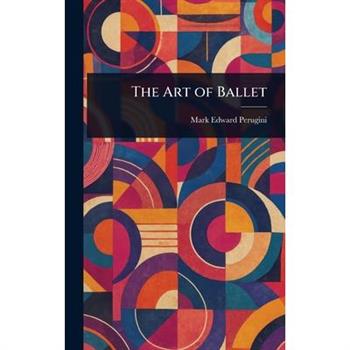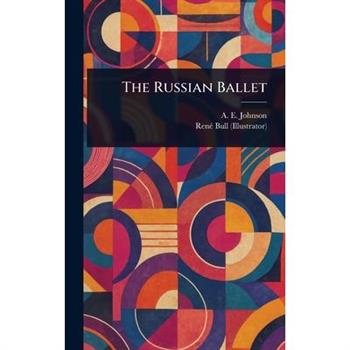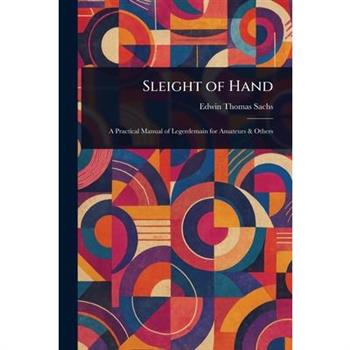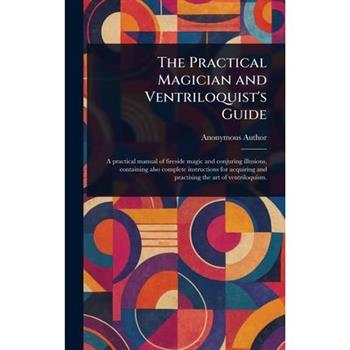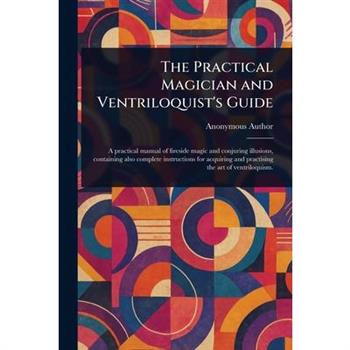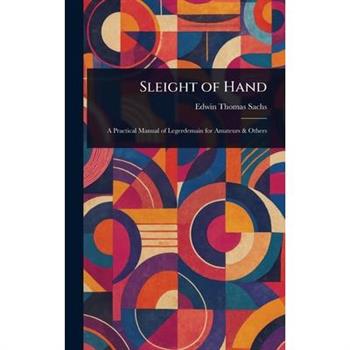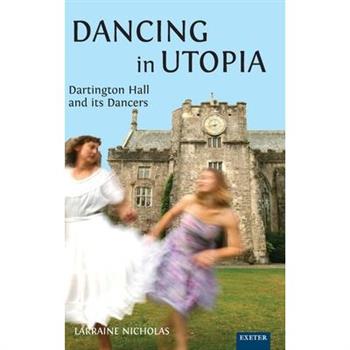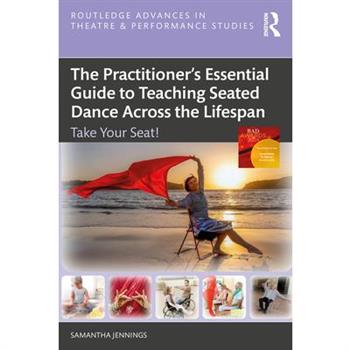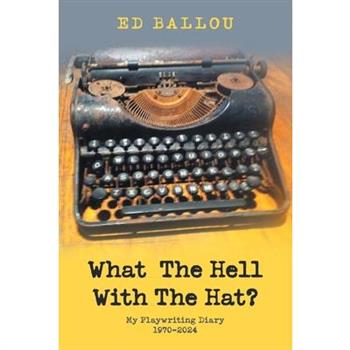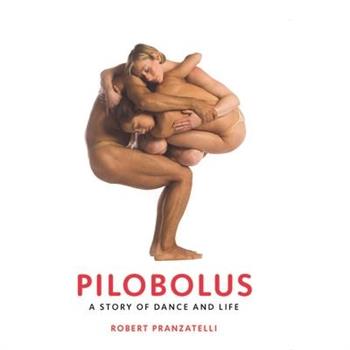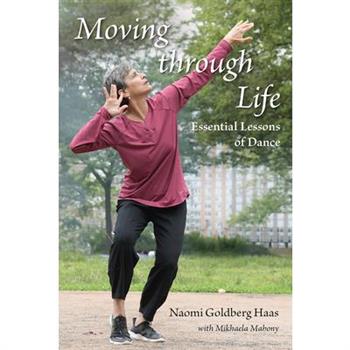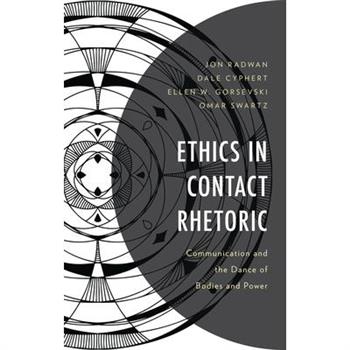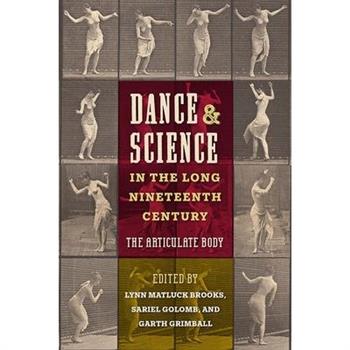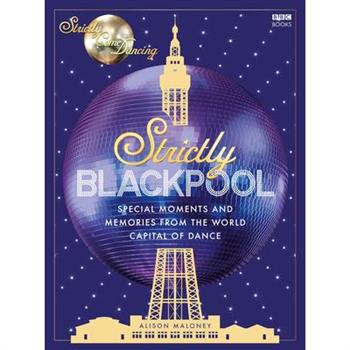The Practical Magician and Ventriloquist's Guide
Wise Words Charli XCX
Channel your inner brat through Charli XCX's own words of wisdom From playing at raves in London with her parents at fifteen to the global phenomenon of Brat, Charli XCX has always carved out her own space in the pop world. In this book you'll find Charli's unique philosophy for life, in her very own words. Featuring her advice on everything from making art to partying, and from finding confidence to growing up, discover Charli at her funniest, bravest, most vulnerable and most outrageous. So grab a white tank top and a Bic lighter, and let's ride!
The Physically Disabled Dancer and the Affirmative Model of Disability
This volume investigates the contributions and achievements of the physically disabled dancer while at the same time challenging and recognizing the inherent inequities in the field of integrated dance in the UK which currently places greater emphasis on the learning-disabled performer.This is the first book ever written by a physically disabled dancer on the subject of physically disabled dancers. Inherent in this examination is the model of examining disability that is most closely associated with the disability arts movement which is the 'affirmative model of disability'. This model is defined as an approach to disability in which the disabled person is neither an object of medical care nor a victim of social indifference but a self-respecting, autonomous individual in which their disability is a positive and affirming aspect of their self-identity. The book, based on interviews with physically disabled dancers, choreographers, academics and arts producers all in a UK context, combines a wide range of perspective of disability dance together with the intellectual rigor of disability studies to produce a new definition of the physically disabled dancer as an affirming, positive, indispensable practitioner of contemporary performance art. The volume pioneers perspectives of the physically disabled dancer prioritizing first person accounts from the performers themselves to produce an unprecedented contribution to the study of disability arts from a uniquely British perspective.This book will offer educators as well as arts and cultural professionals a critical resource for facilitating work by and in alliance with practitioners of integrated dance.
Dancing in Utopia
Bought in 1925 by Dorothy and Leonard Elmhirst, the Devon estate of Dartington Hall earned itself a place in the annals of utopian schemes through the Elmhirsts' conviction that arts, education and work could all be integrated into an abundant life for the participation of everyone. From the perspective of the time, when dance was not necessarily given equality with other arts, they believed in dance as an art for the betterment of society. As early as 1932 a Dance School was built on the site. It offered professional training in modern dance, and acted as a base for community outreach. From the 1960s, Dartington College of Arts became a fulcrum for intercontinental exchanges and the Dartington Dance Festivals of the 1970s provided inspiration for a generation of independent and radical choreographers. After Dartington College of Arts moved from the estate in 2010, many dance artists were able to develop their work in the vacated studios. Schumacher College, Dartington's ecological education centre, meanwhile evolved degree qualifications that combined rigorous science with discovery methods deriving from the embodied training that dancers had been developing. This new edition of the book, first published in 2007, assesses Dartington's dance legacy in its centenary year, with insights into dance of the twenty-first century. For students of history, it provides a lens through which to view a century of change in dance and society. Enthusiasts of Dartington Hall will find here a compelling narrative about exceptional artists working within the often impossible demands of utopian dreams.
The Practitioner's Essential Guide to Teaching Seated Dance Across the Lifespan
This book is a seminal seated dance guidebook for global dance and health practitioners. Seated dance is an inclusive and diverse form of physical activity, suitable for all, regardless of age or disability.The book offers valid advice, inspiration and a wide range of tried and tested teaching and learning approaches to help practitioners succeed in the seated dance classroom, covering all ages and settings. This book introduces a potted historical journey of seated dance and subsequently guides the professional practitioner through the critical stages of setting up professional, safe and creative seated dance sessions. Research and evidence are gathered 'in and on practice' through the author's dedicated dance career and teaching reflections as a Royal Academician of Dance (RAD) teacher and are underpinned by a theoretical background in mental health and wellbeing in education. It contains contributions by valued peers and professionals and extracts from research theorists in the field. 'Take Your Seat' is a career professional development Group-approved text (CPD) enabling the reader to claim personal and professional development points. The author places the art of seated dance at the centre of dance education, making it inclusive, diverse, accessible and justifiable in today's various dance arts and health settings.This book integrates the author's extensive experience in dance, contemporary mental health and wellbeing research and insights from esteemed peers. It empowers practitioners to embrace diverse perspectives, fostering an inclusive and forward-thinking dance environment.
Behind the Red Velvet Curtain
In 2012 Joy Womack made history when she became the first American ballerina to sign a contract with the Bolshoi Ballet Theater in Moscow, Russia.Dancing in Moscow was not the Onion Dome fairy tale she'd hoped for. The Bolshoi and its school were filled with cutthroat competition, acts of violence, and coaches who encouraged obsessive devotion. They sent her on stage with broken bones, helped her forge immigration paperwork, and encouraged her to toe a dangerous political line - all for the privilege of dancing on one of the world's most storied stages. As Joy's career took off and she made a name for herself in the Russian ballet world, she had to face a hard choice. Were the growing dangers of a professional lifestyle descending into corruption worth the realization of her life's dream?
Butoh and Suzuki Performance in Australia
In Butoh and Suzuki Performance in Australia: Bent Legs on Strange Grounds, 1982-2023, Marshall considers how the originally Japanese forms of butoh dance and Suzuki's theatre reconfigure historical lineages to find ancient yet transcultural ancestors within Australia and beyond. Marshall argues that artists working in Australia with butoh and Suzuki techniques develop conflicted yet compelling diasporic, multicultural, spiritually and corporeally compelling interpretations of theatrical practice. Marshall puts at the centre of butoh historiography the work of Tess de Quincey, Yumi Umiumare, Tony Yap, Lynne Bradley, Simon Woods, Frances Barbe, and Australian Suzuki practitioners Jacqui Carroll and John Nobbs. Jonathan W. Marshall's Bent Legs on Strange Grounds is an important contribution to the body of literature on butoh, as well as to studies of dance in Australia that will be valuable to practitioners and scholars alike. Detailed discussions of Australian butoh artists open up consideration of how global and local histories, migrations, and landscapes not only were key to butoh's formation in Japan, but also to its continued development around the world. Attention to butoh's emplacement in Australia, Marshall convincingly argues, reveals insights about national identity, race, power, and more that are relevant well beyond the Australian performance context. -- Rosemary Candelario, Texas Woman's University, co-editor, Routledge Companion to Butoh Performance (2018) Marshall's Bent Legs on Strange Grounds explores the remarkable transformative era of Australia's reconsideration of its place in the region. A definitive study of Australian experiments in butoh and the theatrical vision of Suzuki Tadashi, the book shows how new corporeal and spatial dramaturgies of the Japanese avant-garde fundamentally changed Australian performance. Expansively researched and annotated, this impressive study connects Australian performance after the New Wave with globalization, postmodern dance, Indigeneity, and subcultures, and it details the work of leading Australian/Asian artists. Bent Legs on Strange Grounds speaks about the development of embodied knowledge and the consequential refiguration of Australia's sense of being in the world. It is also a study of butoh and Suzuki's legacy in global terms, wherein Australian experimental performance also becomes something larger than itself. -- Peter Eckersall, The Graduate Center, CUNY, author of Performativity and Event in 1960s Japan (2013).
Moving Through Life
A story of resilience, joyful creativity, and the empowering potential of dance Moving through Life traces the journey of influential dancer, teacher, and choreographer Naomi Goldberg Haas. Sharing her lifelong love of movement, her experiences as a dancer with chronic health conditions, and accessible exercises from her work with dancers of all ages and abilities, Goldberg Haas encourages readers to integrate dance into their lives and to move with awareness, creativity, and joy.Goldberg Haas describes her early years as an emerging dancer at the School of American Ballet and how she explored and reveled in many dance forms throughout her career. She takes readers from a focus on fundamentals such as balance, strength, and flexibility to a deeper understanding of dance as a transformational community practice. With a unique perspective informed by navigating a degenerative neuromuscular disease, Goldberg Haas conveys a positive message: dance is an opportunity for renewal and growth at all stages of life. Alongside Goldberg Haas's story, this book provides insights and step-by-step instructions from the MOVEMENT SPEAKS(R) curriculum developed by Goldberg Haas for her nonprofit Dances for a Variable Population, a program that brings dance to older adults in New York City. Readers will learn from Goldberg Haas to exercise both their bodies and minds in ways that work for them. They will discover for themselves what Goldberg Haas's life illustrates--the value of dance in improving physical, mental, and social wellbeing. In a memoir of personal struggle, resilience, and celebration, Goldberg Haas portrays many of the changes that can come with aging and embraces the empowering potential of dance. From childhood memories to moments of epiphany later in life, this account from a leading figure in the dance community shows how movement can enrich and improve the lives of everyone.
Kathakali
Authored by a leading exponent of the form, this book provides a clear guide to Kathakali, exploring its origin, evolution, and characteristics and the ways it has adapted for a 21st-century audience. Kathakaliis an introduction to this vibrant mode of dance drama, which comes from Kerala in southwest India and combines poetry, music, rhythm, and dance to represent stories of gods, demons, and humans. Originating in the latter part of the 16th century, today Kathakali commands attention and involves practitioners from around the world. Largely drawing its stories from the Ramayana and the Mahabharata, it integrates music, dance, grand makeup, and costume to evoke the epic universe. This book illuminates how Kathakali combines associated literary texts, performative conventions, and practices from local and pan-Indian contexts. The actors use their whole body-deploying complex dance movements, interpretive gestures, and highly developed facial expressions-as a site to depict, elaborate, and interpret action. Encapsulating the world of Kathakali, its performative grammar, and the aesthetic theories that underpin it, this book examines its history as one of continual change.The book traces the distinctive features of Kathakali, which is sometimes tightly structured with fixed conventions, and sometimes fluid enough to incorporate imaginative flights of fancy. It assesses Kathakali's cultural legacy and charts how the form has changed over the centuries. It also includes translations of extracts from poems, plays, and performance manuals, as well as interviews with actors and cultural historians.
Text as Dance
This book offers a groundbreaking investigation into issues of gender, power and the representation of sovereignty in French Baroque court ballet - and in today's performances that recall them.Mark Franko uses powerful interpretive tools derived from historiography and critical theory, especially the work of German-Jewish philosopher Walter Benjamin, to offer the reader both a historical and a theoretical interpretation of this genre of dance in France (c. 1615-1654), as well as its aftermath and legacy today. Through doing so, he reaches conclusions about how sovereignty and power were both perceived by viewers at the time and how they were represented through dance, given that it was the noble class who devised and performed court ballets. He enquires into the role of choreography and theatricality as potentially critical forces operating at the heart of sovereignty. Franko places the work of Louis Marin on power, representation and movement in French Baroque painting and performance in juxtaposition to that of Benjamin on theater. Other historians whose work is prominent in this study are Ernst Kantorowicz, Michel Foucault and Jos矇 Antonio Maravall. With wide breadth in the work of historians, philosophers, political scientists, critical theorists, musicologists and dance historians, this is the culmination of a career's-worth of scholarship and research in the field.
Classical Indian Dance in Literature and the Arts
Classical Indian Dance in Literature and the Arts offers a profound exploration of the rich interplay between classical Indian dance forms and the broader realms of literature and the arts. This book delves into the historical, cultural, and aesthetic dimensions of classical Indian dance traditions, such as Bharatanatyam, Kathak, Odissi, Kuchipudi, and Manipuri, among others. Through an interdisciplinary lens, readers discover how these dance forms are intricately woven into the fabric of Indian literature, mythology, poetry, music, and visual arts. Drawing on ancient texts, scholarly analysis, and contemporary performances, the book illuminates the enduring significance of classical Indian dance as a vibrant expression of spirituality, storytelling, and cultural identity. Whether you're a student of dance, literature, or cultural studies, or simply an enthusiast of Indian arts and traditions, this book offers a captivating journey into the enchanting world of classical Indian dance and its enduring resonance across artistic disciplines.
The Joy of Salsa
Dance into a World of Joy and ConfidenceEmbark on an exhilarating journey with The Joy of Salsa: Unleash Your Confidence, Step by Step, where the thrill of dance meets personal transformation. Enter a vibrant world of rhythm and movement that promises to lift your spirits and boost your confidence.Explore the heart and soul of salsa, as you discover its rich origins and diverse styles in the opening chapters. Whether you're a newbie taking your first step or a seasoned dancer, this book offers a treasure trove of insights and techniques to enhance your journey. Learn the foundational steps and footwork, and feel the rhythm that will guide your every move.Dive deeper into the art of salsa with chapters dedicated to perfecting posture and balance-a critical component for any dancer. Experience the music on a new level, understanding its beats and expressions, and becoming one with its flow. As you advance, unlock the magic of partner work, mastering the subtle art of communication without words.Add your unique flair with styling techniques that will have you spinning and turning with grace and confidence. The book offers practical strategies to overcome common dance fears, empowering you to glide across the dance floor with self-assurance. Structured practice guides and goal-setting advice ensure not just improvement, but true mastery.Experience the joy of salsa in social settings, understanding its culture and etiquette to enrich your interactions and connections. Beyond steps and spins, discover the incredible fitness benefits of salsa, making it a fulfilling workout for body and spirit. Finally, the book invites you to continually expand your skills and embrace salsa as a lifelong journey of joy and growth.
The Dancer's Handbook
The Dancer's Handbook offers a holistic exploration of the dance industry's challenges, authored by dancers intimately familiar with its complexities.
Ethics in Contact Rhetoric
To counterbalance traditional communication ethics grounded in linguistic or symbolic rhetorical theories, Ethics in Contact Rhetoric de-centers discourse and begins with bodies and the art of dance to formulate an immediate bio-relational communication theory-contact rhetoric--that addresses the full physical and moral range of rhetorical force.
Dancing on the Fault Lines of History
Dancing on the Fault Lines of History collects essential essays by Susan Manning, one of the founders of critical dance studies, recounting her career writing and rewriting the history of modern dance. Three sets of keywords--gender and sexuality, whiteness and Blackness, nationality and globalization--illuminate modern dance histories from multiple angles, coming together in varied combinations, shifting positions from foreground to background. Among the many artists discussed are Isadora Duncan, Vaslav Nijinsky, Ted Shawn, Helen Tamiris, Katherine Dunham, Jos矇 Lim籀n, Pina Bausch, Reggie Wilson, and Nelisiwe Xaba. Calling for a comparative and transnational historiography, Manning ends with an extended case study of Mary Wigman's multidimensional exchange with artists from Indonesia, India, China, Korea, and Japan. Like the artists at the center of her research, Manning's writing dances on the fault lines of history. Her introduction and annotations to the essays reflect on how and why these keywords became central to her research, revealing the autobiographical resonances of her scholarship as she confronts the cultural politics of the late twentieth and early twenty-first centuries.
Dancing on the Fault Lines of History
Dancing on the Fault Lines of History collects essential essays by Susan Manning, one of the founders of critical dance studies, recounting her career writing and rewriting the history of modern dance. Three sets of keywords--gender and sexuality, whiteness and Blackness, nationality and globalization--illuminate modern dance histories from multiple angles, coming together in varied combinations, shifting positions from foreground to background. Among the many artists discussed are Isadora Duncan, Vaslav Nijinsky, Ted Shawn, Helen Tamiris, Katherine Dunham, Jos矇 Lim籀n, Pina Bausch, Reggie Wilson, and Nelisiwe Xaba. Calling for a comparative and transnational historiography, Manning ends with an extended case study of Mary Wigman's multidimensional exchange with artists from Indonesia, India, China, Korea, and Japan. Like the artists at the center of her research, Manning's writing dances on the fault lines of history. Her introduction and annotations to the essays reflect on how and why these keywords became central to her research, revealing the autobiographical resonances of her scholarship as she confronts the cultural politics of the late twentieth and early twenty-first centuries.
Dance and Science in the Long Nineteenth Century
Revealing the interplay and influence of dance and scienceduring an age of colonial expansion Bringing together danceand science, two paradigms that explore the nature and possibilities of thebody, this volume illuminates the meanings and articulations of dance innineteenth-century societies. This global collection of studies reveals how thetwo fields informed each other's development and engaged with dominant Europeanworldviews in a time of unprecedented colonial expansion. The chapters in Danceand Science in the Long Nineteenth Century examine how trends anddevelopments in the performing arts reflected scientific thinking of this era, including the categorization of "types" of bodies and the ranking of culturaland religious beliefs, as well as how dance served as an active site of inquirywhere the workings and limits of the human body could be studied. Researchersdiscuss topics including the influence of plant biology on the aesthetics ofballet, technological advancements in the staging and recording ofperformances, arguments for the use of Eurhythmics in promoting a stronger"race," and European fascination with Indian dance and yoga. Featuring responseessays that put leading scholars in conversation with one another and offer newperspectives, this volume is unique in its geographic scope and its discussionof diverse bodies, cultures, themes, and scientific disciplines. It sheds lighton a historical interplay that has shaped many of today's political andcultural realities.Contributors: Johanna Pitetti-Heil Chantal Frankenbach Jane Desmond Christian Ducomb Claudia Jeschke K矇lina Gotman Pallabi Chakravorty Andrea Harris Dick McCaw Stephen Ha Emily Coates Tiziana Leucci Elizabeth Claire Susan Cook Carrie Streeter Olivia Sabee Janice Ross Alexander H. Schwan Whitney Laemmli
Butoh, as Heard by a Dancer
This book explores the origins of Butoh in post-war Japan through orality and transmission, in conjunction with an embodied research approach.The book is a gathering of seminal artistic voices - Yoshito Ohno, Natsu Nakajima, Yukio Waguri, Moe Yamamoto, Masaki Iwana, Ko Murobushi, Yukio Suzuki, Takao Kawaguchi, Yuko Kaseki, and the philosopher, Kuniichi Uno. These conversations happened during an extended research trip I made to Japan to understand the context and circumstances that engendered Butoh. Alongside these exchanges are my reflections on Butoh's complex history. These are primarily informed by my pedagogical and performance encounters with the artists I met during this time, rather than a theoretical analysis. Through the words of these dancers, I investigate Butoh's tendency to evade categorization. Butoh's artistic legacy of bodily rebellion, plurality of authorship, and fluidity of form seems prescient and feels more relevant in contemporary times than ever before.This book is intended as a practitioner's guide for dancers, artists, students, and scholars with an interest in non-Western dance and dance history, postmodern performance, and Japanese arts and culture.
Karbala in the Taʿziyeh Episode, Shiʿi Devotional Drama in Iran
"I am not Shemr, this is not a dagger, nor is this Karbala," recites the arch-antagonist as a taʿziyeh performance begins. Verisimilitude is not the endeavour; this is a devotional offering that stirs lament for the the Shiʿi martyrs by representing events crucial to sacred history. But what does that retelling entail? Through study of four of its main episodes--from their long inter-female dialogues to the protagonists' encounters with jinn, dervishes, and foreigners--this book explores the taʿziyeh repertoire's compositional features. Combining a wide range of historical scripts, largely unpublished manuscripts, with witness accounts, it tracks the tradition's development from Safavid to Qajar Iran asking, who were its contributors? And, how have they left their mark?
The Routledge Introduction to Ballet, its Culture and Issues
As an introduction to ballet's history, culture, and meanings, this book draws on the latest ballet scholarship to describe the trajectory of a dance form that has risen to global ubiquity and benefited from many diverse influences along the way.Organized around themes, the book explains how the manners, style, and hierarchies of ballet became such a strong part of its DNA. It addresses the origins of ballet's aristocratic vocabulary and the ways in which it may be interpreted now, incorporating meanings that range from the aesthetic to the spiritual and the political. The Routledge Introduction to Ballet, its Culture and Issues explores how dancers and audiences have experienced ballet, how popular films have represented it, and who has been excluded and how that could change. The chapters highlight the people, institutions, and works that helped to establish ballet's reputation, while also uncovering lesser-known influences and new ways of interpreting ballet. Lists of research resources--further readings, documentary films, and dance feature films--offer starting points for further avenues of learning. This book's central premise is that all dance reflects the culture in which it develops and is capable of embodying and disseminating new ideas.This is the definitive introduction for anyone drawn to ballet or seeking to understand it, and those looking to develop a thorough understanding of how ballet developed, the cultures that formed it, and what it can mean for today's audiences, artists, and scholars.
Researching Popular Entertainment
Researching Popular Entertainment is an essential volume for scholars delving into the vibrant yet complex world of popular entertainment.Written by a global network of experts, this book addresses the unique challenges researchers face in this field. The often-dismissed status of popular entertainment, coupled with its reliance on physicality and improvisation over scripted performances, has meant archival and textual sources tend to be more limited than in related theatre and performance disciplines. This scarcity requires historians to find alternative pathways through the available materials to recuperate seemingly insignificant figures and performance forms from our cultural past. This book provides a candid look into the research processes of its authors, highlighting some of the approaches they have adopted to overcome these challenges. It emphasises that reading performance as entertainment is a deliberate methodological choice. Regardless of whether a work is deemed high or low art, legitimate or illegitimate, understanding how it captivates its audience is central to the study of entertainment.Readers will benefit from its in-depth analysis and practical guidance, making it an indispensable resource for anyone studying popular entertainment.
Humanizing Ballet Pedagogies
In Humanizing Ballet Pedagogies, Jessica Zeller offers a new take on the ballet pedagogy manual, examining how and why ballet pedagogies develop, considering their implications for students and teachers, and proposing processes by which readers can enact humanizing, equitable approaches.This book supports pedagogical thinking and development in ballet. Across three parts, it reflects how pedagogies come to be: through rationales, dialogues, and practices. Part 1, Philosophies, offers a contextual reading of ballet pedagogy's historic relationship to ideals, and it describes an alternative approach that takes its meaningful purpose from the embodied knowledge of participants in the ballet class. Part 2, Perspectives, looks at how the teacher's person shapes the ballet class. It draws from a new survey of ballet students that illuminates the direct effects of pedagogies and proposes future directions. Praxis, Part 3, includes three theoretically based approaches that can be applied directly or adjusted to readers' contexts for teaching ballet: yielding to student agency and autonomy, ungrading graded ballet classes in higher education, and practicing reflection for growth. Grounded in the wide range of people who participate in ballet, themes of equity, ethics, and humanity are at the heart of this book.Humanizing Ballet Pedagogies is a valuable resource for those teaching or developing a teaching approach in ballet. It addresses important issues for school owners, administrators, or anyone responsible for supporting ballet teachers or students in the twenty-first century.
The One Direction Fanbook
The One Direction Fanbook: One of the biggest success stories to come from The X Factor, One Direction took over the world thanks to their music, charm and superfan following. Inside this special edition fanbook, explore Harry, Niall, Liam, Louis and Zayn's electrifying story, from the group's formation in 2010 all the way through to today where we'll catch up on each member's exciting solo career. Along the way, we'll examine each One Direction album from Up All Night to Made In The A.M. in track-by-track detail, relive the highs of 1D mania and take some time to pay tribute to the fans that have stuck with the group over their ten-year journey.
Strictly Blackpool
Ask a Strictly star at the start of their journey what their goal is and the chances are they'll say 'Getting to Blackpool.' The iconic Tower Ballroom has been a Mecca to the ballroom dancing world since 1894, and Strictly's annual trip to the bright lights is a highlight of the series for contestants and viewers alike. Strictly Blackpool takes fans on a trip down memory lane, celebrating the most memorable routines from specials of the past and the dancers' own Blackpool experiences, as well as a behind the scenes glimpse of how the BBC's flagship show is transported to the seaside town every year for the magical ballroom special. There is a fascinating look at the Tower Ballroom's amazing history and secrets - from the circus in the basement to the elephants that lived in the building and bathed on the beach - as well as special photos from the Tower's archives. Bringing together the exciting history of the Ballroom and the magic of the annual Blackpool special, this beautifully-packaged book is a true celebration of Blackpool's dance heritage, and a must-buy for any Strictly fan!
Resistance and Support
Resistance and Support: Contact Improvisation @ 50 is a ground-breaking anthology that collects twenty original writings that elucidate critically important somatic and political perspectives on Contact Improvisation (CI). This form of partner dancing that was started in the United States in 1972, has spread into a vibrant global community in the twenty-first century. Resistance and Support is edited and includes an introduction by veteran CI practitioner and dance studies scholar Ann Cooper Albright. For much of its existence in the twentieth century, Contact Improvisation prided itself on its democratic and egalitarian roots. Jams are open to newcomers, women learned to lift men, and dancing roles were not conventionally gendered in the traditional sense of partnered dancing such as tango or ballroom. These conventions meant that questions of social power were often ignored within the jams and festivals where Contact Improvisation thrives. This thoughtful collection engages issues of inclusion and access through insightful essays written by people whose life experiences are shaped by this extraordinary form of kinaesthetic communication. Chapters trace the stories of CI in China and Taiwan, India, Mexico, Brazil, as well as those in the U.S., Canada, and Europe. Some discuss the somatic training that provides a movement basis for the improvisational exchanges between dancers. Others foreground the feminist and queer perspectives on the evolving twenty-first century practice of the form. Several elaborate on the healing, spiritual, or therapeutic aspects of CI, while others explore the mixed ability approaches to the form popularized by Alito Alessi's Dance Ability pedagogy. Like Critical Mass: CI @ 50, the international conference and festival honoring CI's 50th anniversary from which these writings emerged, these essays both celebrate the expansive possibilities and critique some of the exclusionary conventions of this ever-evolving form of communal dance.
Mountain Dance and Hoedown Workshop
A Basic Reference Guide to Appalachian Mountain Square Dance Figures
Ceremonies Out of the Air: Ralph Lemon
More than 40 works across media, including major ensemble performances, emerging in the afterlife of postmodern dancePhiladelphia-based artist, dancer and choreographer Ralph Lemon (born 1952) is one of the most significant figures to arise from New York's downtown scene in the 1990s. This catalog, published on the occasion of the first US museum exhibition of Lemon's work in movement, film and installation, traces the arc of his ongoing collaborations, which extend far beyond the paradigm of dance. Text by exhibition curators Connie Butler and Thomas Jean Lax is accompanied by essays and contributions by Kevin Beasley, Adrienne Edwards, Saidiya Hartman, Darrell Jones, Ralph Lemon, Okwui Okpokwasili and Kevin Quashie. Featuring a dust jacket that unfolds into a poster, the book includes full-color illustrations of Lemon's artworks and reproductions of his sketches and notations.







